‘An Act of Rebellion’: The Young Farmers Revolutionizing Puerto Rico’s Agriculture

Today, less than 2% of the workforce is employed in agriculture and tens of thousands of acres of arable land sit idle. Meanwhile 85% of the food eaten in Puerto Rico is imported, grocery prices are among the highest in the US and last year two in five people experienced food insecurity. “Unemployment is brutal, prices are brutal, migration from the island is brutal,” said Denise Santos, who runs Puerto Rico’s food bank.
Puerto Rico, a mountainous Caribbean archipelago, is also one of the places in the world most affected by extreme weather such as storms, floods and droughts. In 2017, Hurricane Maria devastated the islands and people went hungry as ships were unable to dock at the damaged ports.
In the face of so many challenges, a new wave of interest in food and farming among younger Puerto Ricans is flourishing, as part of a wider movement demanding political, environmental and social justice. Small scale sustainable farming known as agroecology is driving a resurgence in locally grown produce that chefs, farmers, entrepreneurs and researchers argue can help revitalize the local economy, improve food sovereignty and both mitigate and adapt to the climate crisis.
What is agroecology?
Agroecology is low impact agriculture that works with nature and local conditions to produce food sustainably so as to protect biodiversity and soil quality while drawing carbon out of the atmosphere.
-
It involves a set of farming principles and practices that can be adapted to any ecosystem, microclimate and culture – a way of life practiced for thousands of years by indigenous people and peasant farmers. Farmers often integrate crops, livestock and trees (agroforestry) in order to maximize ecological conditions, such as a fruit orchard that aids water retention and provides shade for crops and grazing animals who in turn fertilize the earth to improve the yield.
-
Crop rotation and crop cover are fundamental to this holistic approach, that takes into consideration the well-being of the Earth, those who produce the food as well as the local communities who eat it. Like in nature, every part of every ecosystem – which includes the farmers – help and depend on each other in some way. Contrast this to intensive industrialized farming which guzzles water, depletes the soil and burns fossil fuels (for fertilizers and powering machinery) to control the environment for genetically identical monocrop production.
-
Advocates say agroecology offers locally driven solutions to a myriad of interconnected crises including food insecurity, biodiversity loss, environmental degradation and global heating.
-
Agroecology is a social and political movement seeking to influence public policies so that sustainable farming benefits from government support (tax breaks, subsidies, and bailouts) currently propping up the dominant industrial agriculture system which is a major cause of biodiversity loss and accounts for more than a quarter of global greenhouse gases.
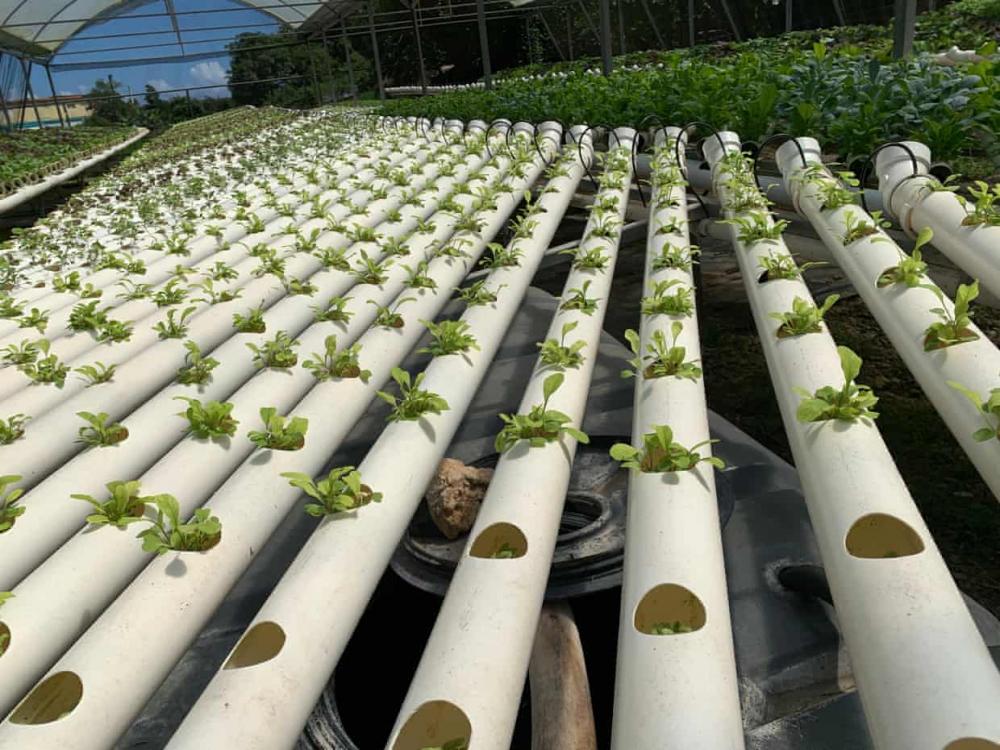
“We would be far better transitioning away from the mess of the fossil fuel, planet-warming, industrial agricultural system that fights against nature, to climate-sensible agroecology that would produce the food we need while helping cool the planet down and increasing our carbon capital,” said Ricardo Salvador, director of the Union of Concerned Scientists’ food and environment program.
Here we profile three agroecology farms striving to change what and how Puerto Ricans eat by challenging the political, economic and agricultural status quo.
The school radicalizing a new generation
El Josco Bravo, Toa Alta
After graduating with a degree in agronomy – the science of soil management and intensive crop production – Ian Pagán-Roig founded the Josco Bravo project in 2004 in the wild Toa Alta mountains as an act of political and social dissidence. At the time, agroecology was either ignored completely or ridiculed as a hippy movement by Puerto Rico’s universities and government officials, so Pagán-Roig started the farm and opened a school to radicalize a new generation of farmers.
“We grew up in a colonial regime being told that without the US we would die from hunger or end up like Cuba. Our ancestors and lands were exploited, agriculture was disparaged, but we are part of a new generation that sees sustainable agriculture and food sovereignty as an act of rebellion,” said Pagán-Roig, 32.
Puerto Rico was one of the first places colonized by the Spanish, who for four centuries exploited the island’s natural resources through the violent displacement of indigenous people and forced migration of enslaved Africans – until the Americans seized it in 1898.
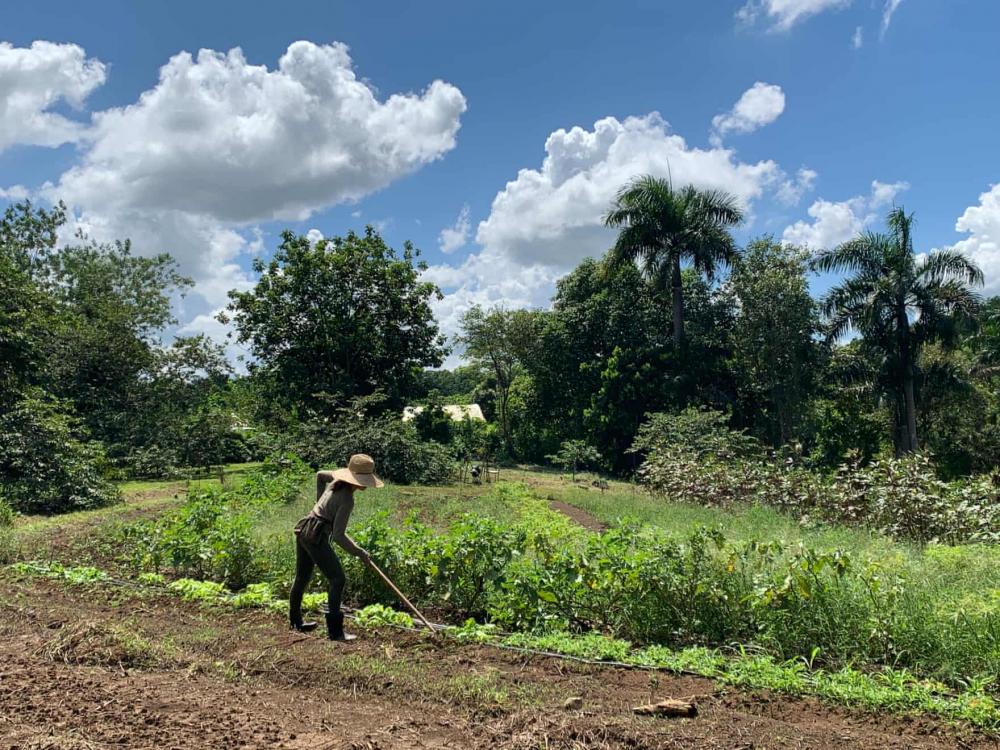
Over time, both occupying forces profited from cash crop plantations where campesinos were forced to work in such miserable conditions that parents pleaded with their children to study hard in order to avoid ending up being a farmer. The poverty and stigma associated with farming helped the US to roll out its industrialization plan in the mid-20th century, leading to an exodus from rural areas as farmers switched to factories. Farmland was abandoned, as manufacturing and then tourism became the mainstay of Puerto Rico’s economy.
“The agroecology revolution on the island is about psychological and social transformation to achieve food and political independence because it recognises our land and people as our most valuable resources,” Pagán-Roig said.
In the past eight years, more than 600 young people have graduated the program, and more than half of them are women – itself a radical change from industrial farming, which is dominated by men. The course now works with several universities across the island, with all students learning scientific principles and sustainable production techniques within a broader social and environmental justice framework. Industrial agriculture remains dominant, but the influence of agroecology is growing in mainstream politics as global heating forces farmers to adapt or fold.
At the farm, education and innovation go hand in hand since extreme unpredictable weather is the new normal. In dry periods they rely on an artificial lake built after the 2014 to 2016 drought – Puerto Rico’s worst in a century. Now they’re building a greenhouse to protect vegetables from heavy rain which set back several crops this year. But genetic diversity in crops is key for natural adaptation to a changing environment, and the small team is currently testing 30 varieties of six vegetables – carrot, cabbage, broccoli, onion, pickling cucumber, and zucchini – to identify which are most resistant to heat, pests and tropical diseases.
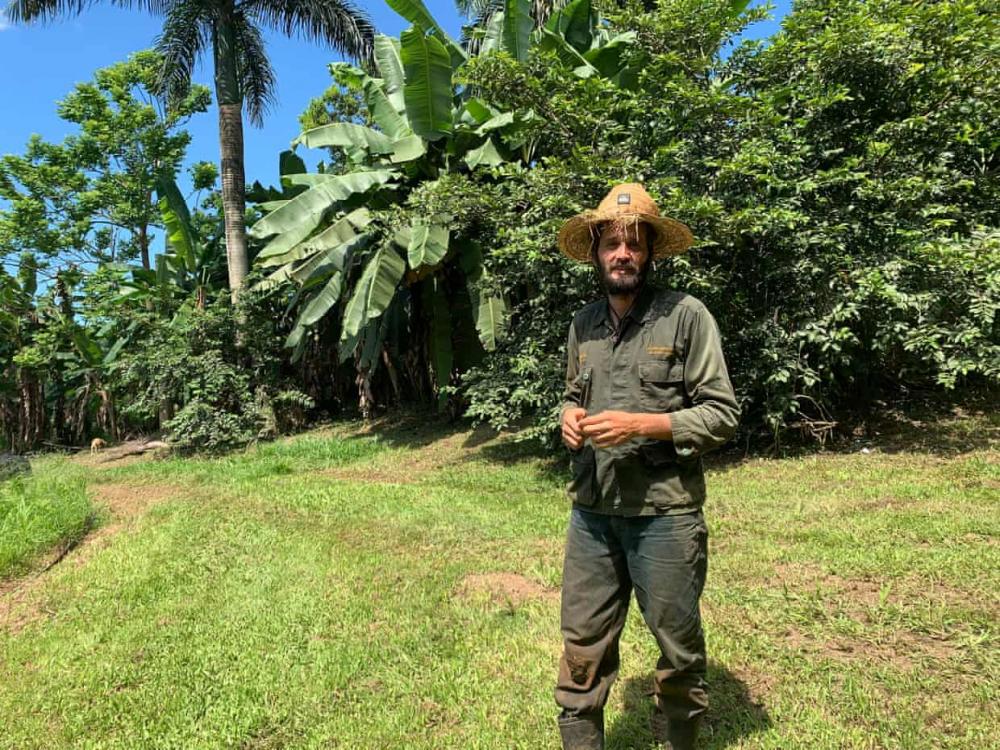
The school hopes to celebrate the thousandth graduate during the project’s 10th anniversary, but access to land and capital continue to limit ambitions for small scale farmers.
After hurricane Maria struck and destroyed 80% of crops across the island, Organización Boricua, the oldest food sovereignty and farm justice network where Pagán-Roig serves on the board, organized solidarity brigades to clean up and repair farms so they could quickly start producing food for their communities. Still, access to federal funds remains bureaucratic and painfully slow, and many small scale farmers were forced to sell up. In addition, land prices are rising as speculators and developers take advantage of tax incentives and desperation.
At Josco Bravo, located just 20 miles west of the capital San Juan, only 5 of the 69 acres rented from the department of agriculture are being farmed. The densely vegetated terrain is very fertile but requires substantial investment to clear and there’s no irrigation system and limited road access. The government won’t rent smaller plots, and accessing credit is tough, so large areas of public arable land remain abandoned.
Pagán-Roig said: “We saw with Maria it’s very risky to be dependent on imports for our food, and we have enough good land in Puerto Rico to sustain our fruit, vegetable and starchy dietary needs, but we lack capital resources and political will.”
Fresh food for locals
Güakiá Colectivo Agroecológico, Dorado
The Güakiá project is the collective brainchild of four graduates from Josco Bravo whose main objective is to improve access to healthy affordable food for vulnerable local communities. The farm is located off a highway in Dorado, an economically divided municipality with both multimillion dollar beach homes and families living hand-to-mouth in houses without indoor plumbing.
The land belongs to a New York-based order of nuns who agreed to rent them 11 acres in 2017 for a symbolic amount ($1 per acre per year) after they’d almost given up hope of finding somewhere affordable. Back then it was a mess, having been used for years as an unauthorized rubbish dump, and they were still cleaning up when Maria struck, leaving many without work, shelter, food or clean water. By the beginning of 2018, they were able to share the first crop – plantain, beans, yuca and papaya – with families going hungry.
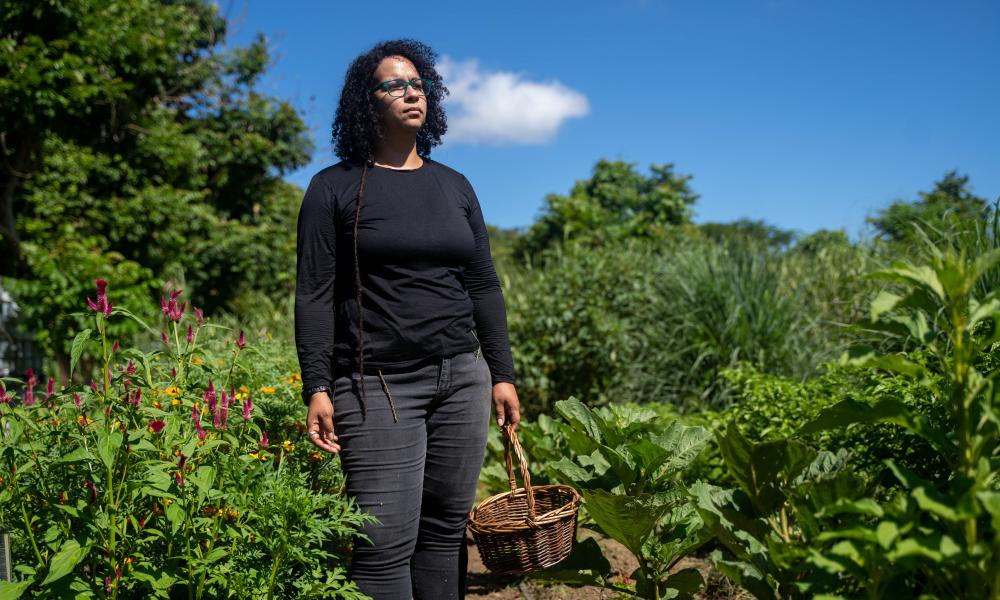
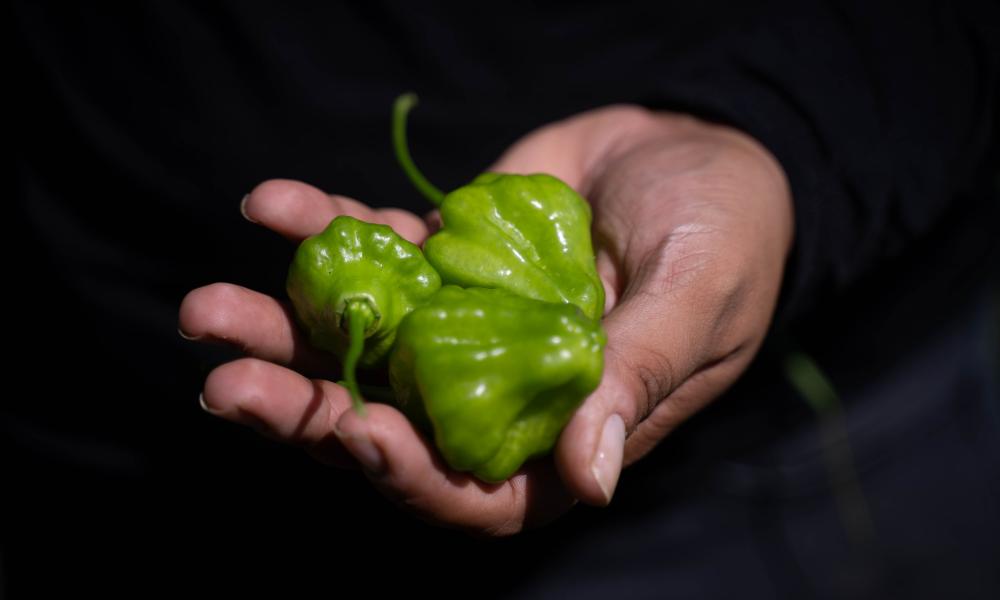
“Agroecology has always been a form of resistance against colonial capitalism, and here we are trying to rescue collective working and reject individualism by reconnecting people to the land and food, and building trust and solidarity,” said Marissa Reyes-Diaz, 32, a biology graduate who also works for the nonprofit El Puente: Latino Climate Action Network. (All four members of the collective have second jobs.)
Agroforestry is a big focus here, and there are fragrant fruit trees growing alongside a variety of crops, which has created multiple small ecosystems that help keep precious nutrients and rainwater in the ground. (Diversity enhances a farm’s resilience, as different crops are vulnerable and resistant to different pests, climate extremes and soil deficiencies.) So far the orchards have helped them survive two very dry spells, but it’s not enough to sustain and grow the farm, even with rainwater tanks and water from a neighbouring farmer. They’re trying to raise $40,000 to build a well connecting to the underground aquifer as water remains the biggest obstacle to long term success.
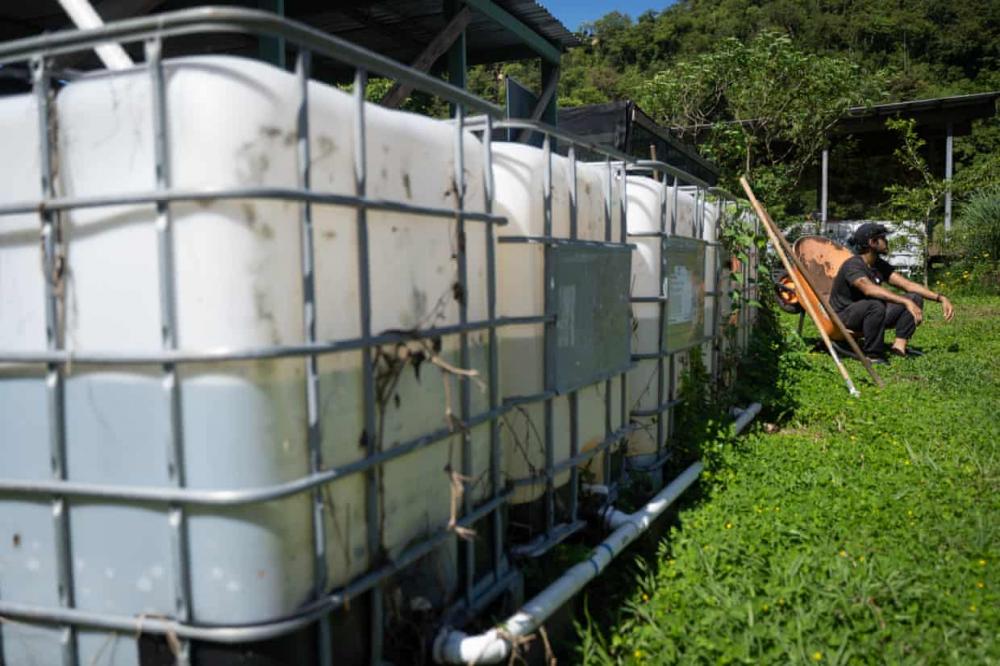
But Güakiá is not just a farm, it’s also a community hub where neighbors come to enjoy the green spaces and try unfamiliar produce such as beets, turmeric roots and wild basil, as well as taste tomatoes fresh from the vine. Some locals volunteer, others exchange their food waste (needed to make compost) for vegetables, and prices remain accessible. They’ve hosted festivals with live music, art exhibitions, self defence classes, yoga and dominos - a very popular Caribbean pastime - and have built an emergency shelter fitted with solar panels ready for the next climate catastrophe. Reyes-Diaz said: “Agroecology has never been just about producing food, it’s also about sustaining our physical and mental health and spiritual wellbeing.”
The foodies supplying the top chefs
Frutos del Guacabo, Manatí
Efrén Robles and Angelie Martinez, the couple who founded Frutos del Guacabo, are foodies not farmers. With little land at their disposal, Robles, an industrial mechanic, and Martinez, a chemist, started out using a soilless growing technique known as hydroponics to grow herbs, watercress and lettuce that chefs at their favorite restaurants struggled to find. Over the past 12 years, they’ve introduced livestock and expanded their techniques and crops, but the close relationship with chefs remains at the heart of the operation which now includes a distribution network with around 50 small farmers and more than 200 restaurants.
The focus is on niche produce that chefs can’t get elsewhere: they grow sishito peppers, a smoky sweet Japanese variety served sauteed coated in sea salt, and the mindblowing habanada, a fairly recent creation by an organic breeder that looks, smells and tastes like the fiery habanero without any of the heat. “We can’t compete with the main chillies and peppers, so we focus on specialties and delivering consistency, which is what chefs want,” said Robles, 40.
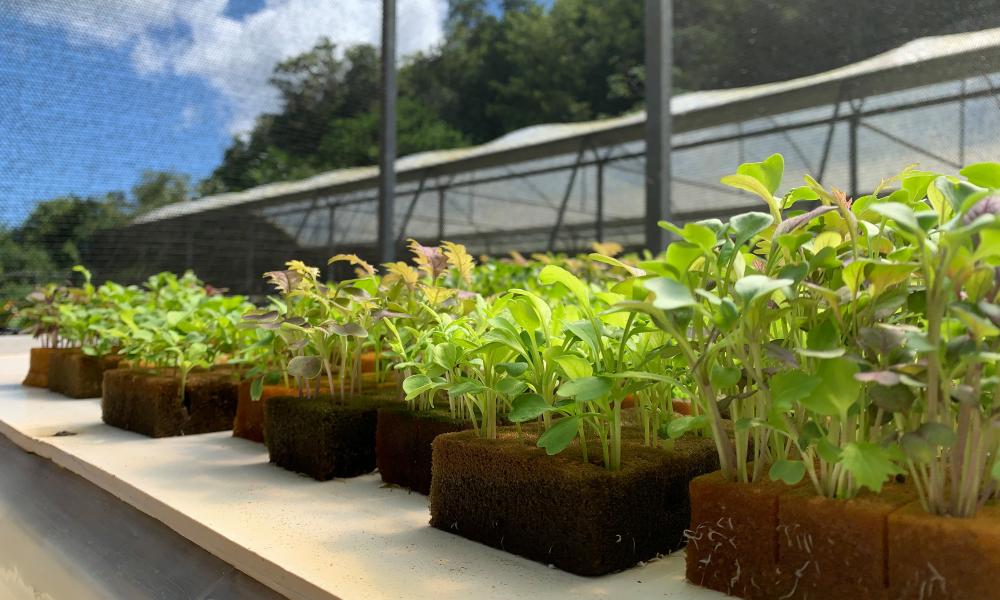
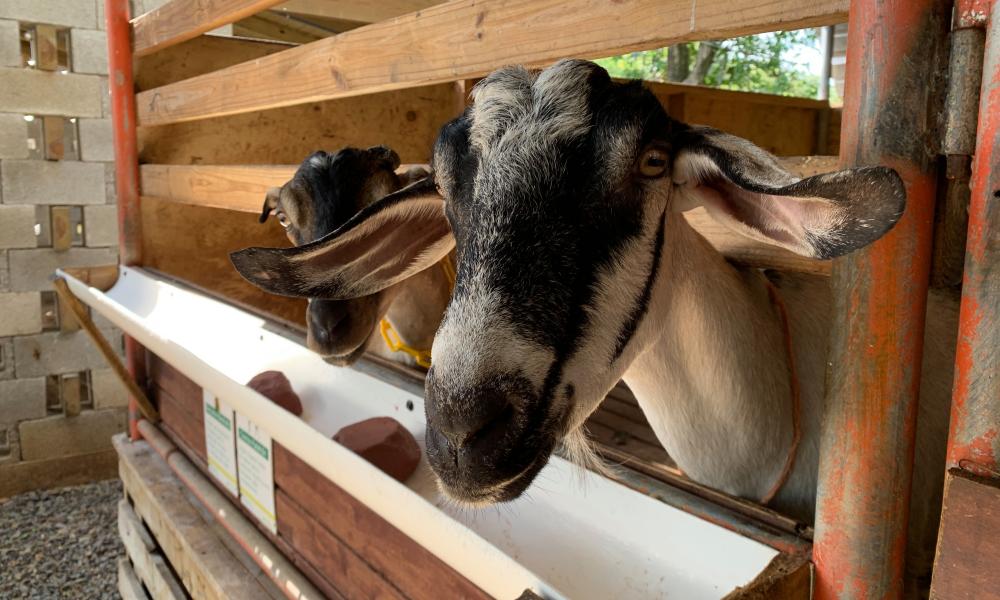
His favorite plant is the lemon drop, a bright yellow bullet shaped solid flower, better known as the toothache plant as it contains a natural anesthetic which briefly numbs the tongue and gums – a bit like popping candy or mild pins and needles. Chefs are sprinkling a few crushed petals in drinks or sorbets as a fun palette cleanser.
The farm hosts open-kitchens: demos where chefs showcase what they can make with non-native ingredients such as eggplants, turmeric and lemon balm, while farmers explain what will grow in their particular microclimates. Connecting small farmers across the island with some of its most celebrated chefs has played an important role in Puerto Rico’s popular farm-to-table movement.
According to Robles, high-end restaurants play an important role in changing dietary habits. “We work with top chefs to create enthusiasm for new produce that then cascades down to cafes and communities.”
The soil in the central northern part of the island, just south of the Tortuguero lagoon, one of only two natural lakes in Puerto Rico, is very sandy so passion fruit trees are among those planted in compost filled tyres to protect fragile flowers and herbs from the coastal winds. Amaranth, an ancient seed enjoying a resurgence as a superfood in the Americas but which isn’t popular in Puerto Rico, is grown at strategic pointsto serve as a natural pest control. Rabbits and sheep are raised for meat; goats for milk, cheese and dulce de leche, while trying to create new breeds suited to Caribbean conditions.
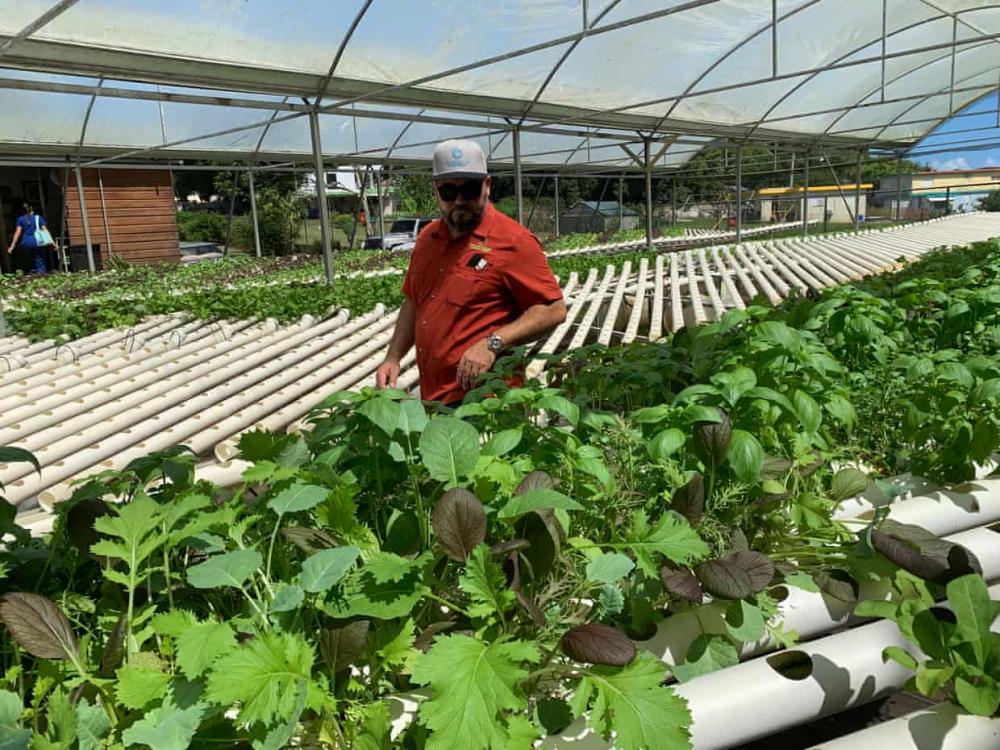
They recently started experimenting with an intensive but pretty sustainable farming practice that has roots in ancient civilizations like the Mayans and Aztecs. Aquaponics involves raising fish like Tilapia in tanks and then circulating that nutrient rich water to nourish soil-free plant beds of herbs and salad greens, before recirculating the water to the tanks.
But while innovative small farms, farmers markets, pop-up kitchens, vegetable box schemes and farm-to-table restaurants are gaining popularity in Puerto Rico, it’s not easy competing in an economy designed to favor foreign investments and US exports.
Robles said: “Eating is a political act, and reducing our dependence on imported food will help create a locally based more sustainable economy and environment. We’ve a long way to go but I’m going to die trying.”
[Nina Lakhani is senior reporter for Guardian US Twitter: @ninalakhani]
Unlike many others, Guardian journalism is available for everyone to read, regardless of what they can afford to pay. We do this because we believe in information equality.
We aim to offer readers a comprehensive, international perspective on critical events shaping our world. We are committed to upholding our reputation for urgent, powerful reporting on the climate emergency, and made the decision to reject advertising from fossil fuel companies, divest from the oil and gas industries, and set a course to achieve net zero emissions by 2030.
Every contribution, however big or small, powers our journalism and sustains our future. Support the Guardian from as little as $1 – it only takes a minute. Thank you, and happy new year.
